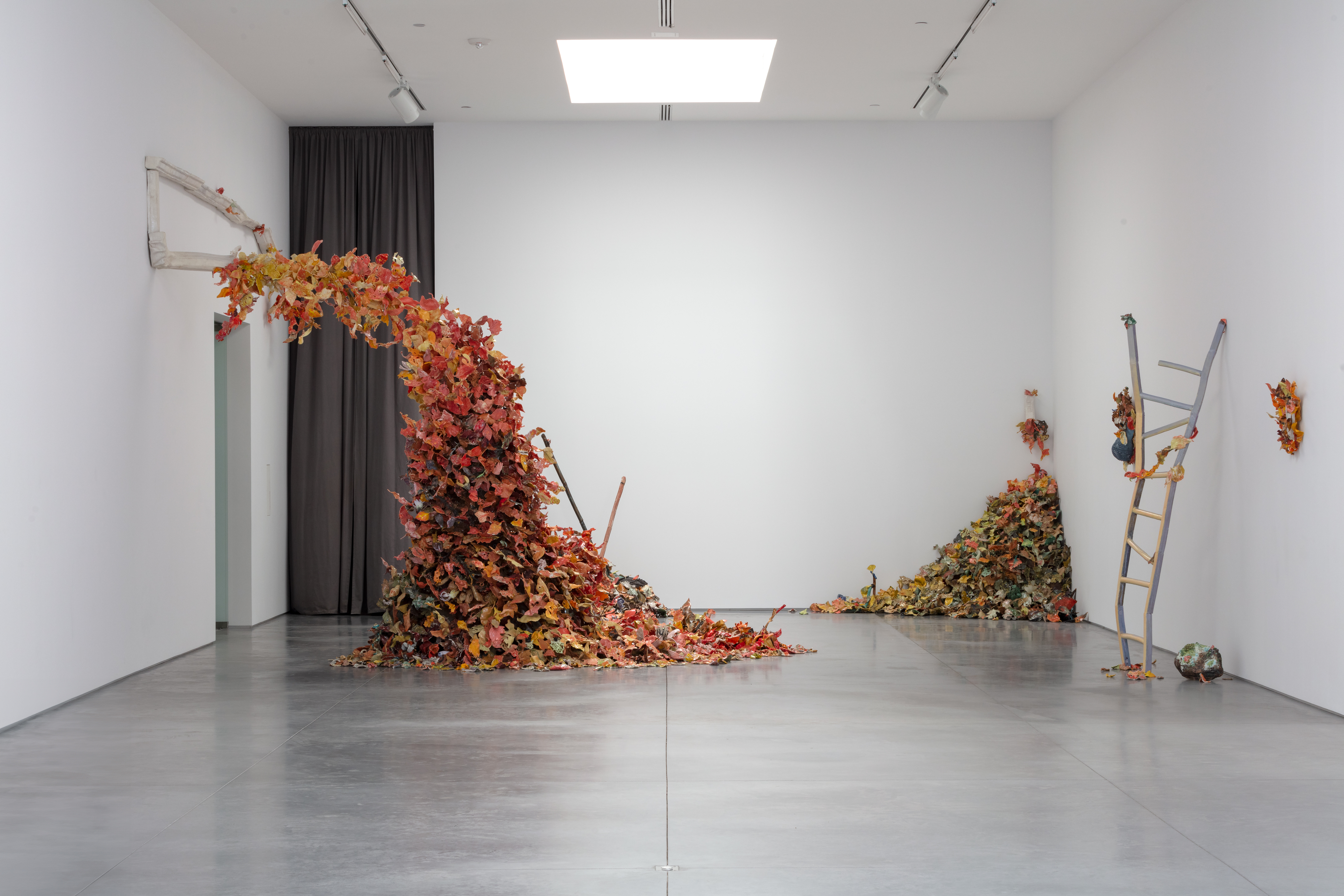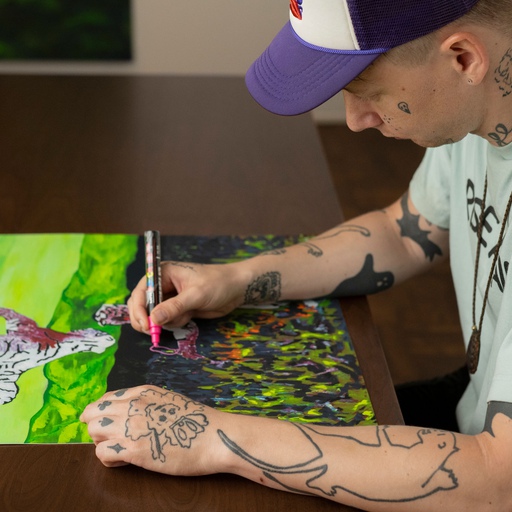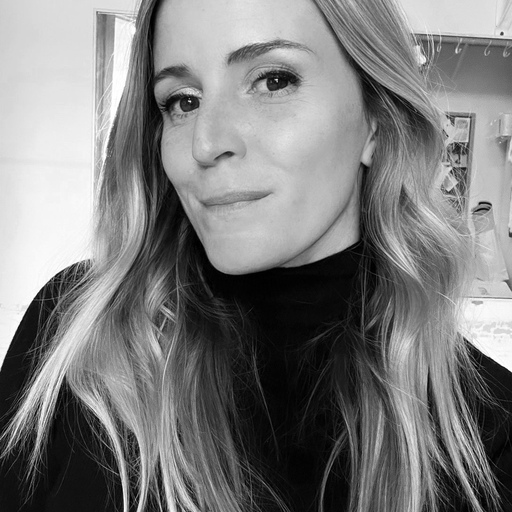Rebecca Manson remembers the moment she fell in love with leaves, or rather the exact moment she fell in love with them all over again.
“I used to collect leaves with my dad when I was really little and press them. Then, a few years ago, I went through some old books in my family’s house and found all these pressed leaves that were so old, just frozen in time. That really inspired me.”
The New York-based sculptor has made what is often referred to as ‘nature’s harvest’ - but what she more accurately describes as ‘nature’s trash’, a significant part of a body of work that’s been shown at Art Basel, Miami, the Modern Art Museum of Fort Worth, Fort Worth, TX, Fairfax Dorn Projects, East Hampton, NY and Josh Lilley, London.
Manson is known for her meticulously constructed sculptures, often featuring leaves that seem to rush forth or envelop the viewer in a vigorous gush of energy that’s as much purge as poetry. She’ll often introduce the element of chance into the creation of these works by pushing the timing and the temperature of the kiln in order to fashion something unexpected from the creation she originally placed within.
She’ll set the kiln to at least 100 degrees beyond what the material can withstand, or fire everything five times, which is pretty unconventional, too. The cycles of suspense between firings are what excite her. Ask her to explain why, and she’ll talk about the idea of personal resilience and rebuilding in the face of adversity.

Rebecca Manson, Gutter, 2021 at the Warehouse. Photo by Kevin Todora
“When you put something in the kiln, there’s this aspect that’s then out of your control,” she tells Artspace. “Then you’re just sort of shepherding it through its own process and manipulating that a little bit. You’re controlling something a little bit. You’re sort of coaxing something but also just trying to observe and let it find its own thing and facilitate something happening.”
“It’s sort of a collaboration with the material, a conversation. Like: I’m gonna do something with you, and you’re gonna do your thing and then I’m gonna respond. The material and I respond to each other, until I find the thing that I’m looking for. Some things are tediously controlled by me, and other things I let out of my control, which contributes to the identity of the piece.”
Manson was just eight-years-old when ceramics, in a way, saved her. “I was a pretty reclusive kid and didn’t really have many friends. I spent every Saturday and Sunday - eight hours each of those days - at this pottery school in a very obsessive way. In the summers I would go to camps where I would just do that. I got really pretty advanced at making pottery from a traditional standpoint. So by the time I was entering my teens. It was just sort of a natural course.”
Entering the ceramics department at the Rhode Island School of Design, Manson soon became intent on ignoring the lessons that she'd learned and assimilated into her practice up until then.
“I didn’t want to be a ceramics major, but that department at Rhode Island School of Design had so much freedom. I think getting to know this material so well, and just consistently being so curious about what else it can do, kept me evolving.”

Rebecca Manson, Gutter, 2021 at the Warehouse. Photo by Kevin Todora
With this freedom to explore came a desire to look at, but also beyond, the inspirations of other artists working in ceramics. Her inspirations, like her own artistic output, became less conventional.
“I think I’ve always been interested in stretching myself outside of the category of ceramics artists, and I’ve always admired artists who communicate using a range of materials and formats. I’ll never forget learning about Grayson Perry.
The vessel forms were familiar, but at a young age, without the language to categorize or cage artists by medium, I could feel that they were transformed from pottery into some other kind of object by their relationship to his greater practice involving drawings, paintings, his alter ego, and textiles.”
An eclectic group including Lucio Fontana, Wangechi Mutu, Sarah Sze, Méret Oppenheim, and Eva Hesse, all also made lasting early impressions; as did Lynda Benglis, Kiki Smith and Louise Bourgeois. “Lynda Benglis was one of my first influences. There’s this spirit that comes through in her work. It’s unapologetic. She just plays with material, and it becomes so expressive.

Rebecca Manson, Gutter, 2021 at the Warehouse. Photo by Kevin Todora
“As an artist who had been focused on one material for years of my development, when I discovered the work of Janine Antoni, I began thinking differently about the relationship between materials and meaning. The order changed in my thinking; material no longer came first.”
“And, a bit of a cliché these days, but I loved Louise Bourgeois just for being so personal in her work. Her work has definitely given me permission to tell personal stories; Kiki Smith too but also for her imagination and the way she engages nature and materials.”
This summer Manson went on a residency to the Norwegian arctic circle, which she describes as “an amazing experience”. She’d been in a zone of production for the past few years and wasn’t sure what she might produce there. However, it quickly became clear that she wasn’t really there to produce anything.
“It felt like I was there to observe, and it really reminded me that really all my work was birthed in observation and responding to what I’m seeing in that romance and that connection with nature. That’s something I just feel really excited to translate – that movement of inanimate things, and nature, and then connect that with something that’s emotional.”
Indeed, on encountering her work for the first time, the most common response among viewers and eventual collectors is its “energy”. “That tends to be the thing that people pick up on. Especially with the leaf work. And that’s really satisfying to me because usually I observe and then I identify a certain energy, and that’s actually the thing I’m trying to convey.”

Rebecca Manson, Gutter, 2021 at the Warehouse. Photo by Kevin Todora
One of her greatest examples of this, Gutter, 2021, the installation at the Rochofsky House, is a dynamic, giddying rush of porcelain, glaze, steel, glue, foam, nail polish, paint, and glass. Myriad textures, colors, and images are reflected in the hundreds of ceramic impressions of leaves, glazed in autumnal colors, which are frozen in motion, yet also seem to tumble with the breeze, whirlwind-like, spilling onto and over the ground below.
“It’s like this purging, and letting everything out, and that physicality but also as a metaphor for emotionally letting everything out,” Manson tells Artspace.
“It’s such an immersive process for me when I’m making that kind of work. There’s so much momentum that has to build in that process to get through the work; get it done. The only way I can imagine making work like that is by building up so much adrenalin and building up this momentum. It’s so much work. Pushing through that. And so I think that has to wind down past the completion of the work.”
“Those works are just so elaborate. Right now I’m working on my installation for the Modern Art Museum of Fort Worth, which is the next big leaf piece. It’s extreme, almost 40 feet by 25 feet. I’ve already been working on it for about a year. The first eight months were just making leaves and that’s really nice at first, but then you have to find ways to keep it interesting.”
“Then there are several months of glazing and then you start to get deeper into the work; you start to think about having to balance the big picture with the small details. You’re working leaf through leaf, but you’re also thinking about things like how many pink do I need? How many yellow do I need?”

Rebecca Manson, Gutter, 2021 at the Warehouse. Photo by Kevin Todora
“So the majority of it is prep, essentially. It’s about getting this palette ready and getting your parts ready and assembling your tool kit. And then really, it’s just the last five months where you’re composing this thing, which is really what it is to make the work.
“And then, suddenly, it’s fast paced, high pressure, and really requires all of you, because you’re defining the entire identity of the work. That pressure motivates me. There definitely is a certain rhythm to that. It’s a build-up. Preparing for the intensity of the storm.”
Look out for an exclusive upcoming Artspace edition of a Rebecca Manson leaf piece in conjunction with TWO x TWO for AIDS and Art in the coming weeks.
























